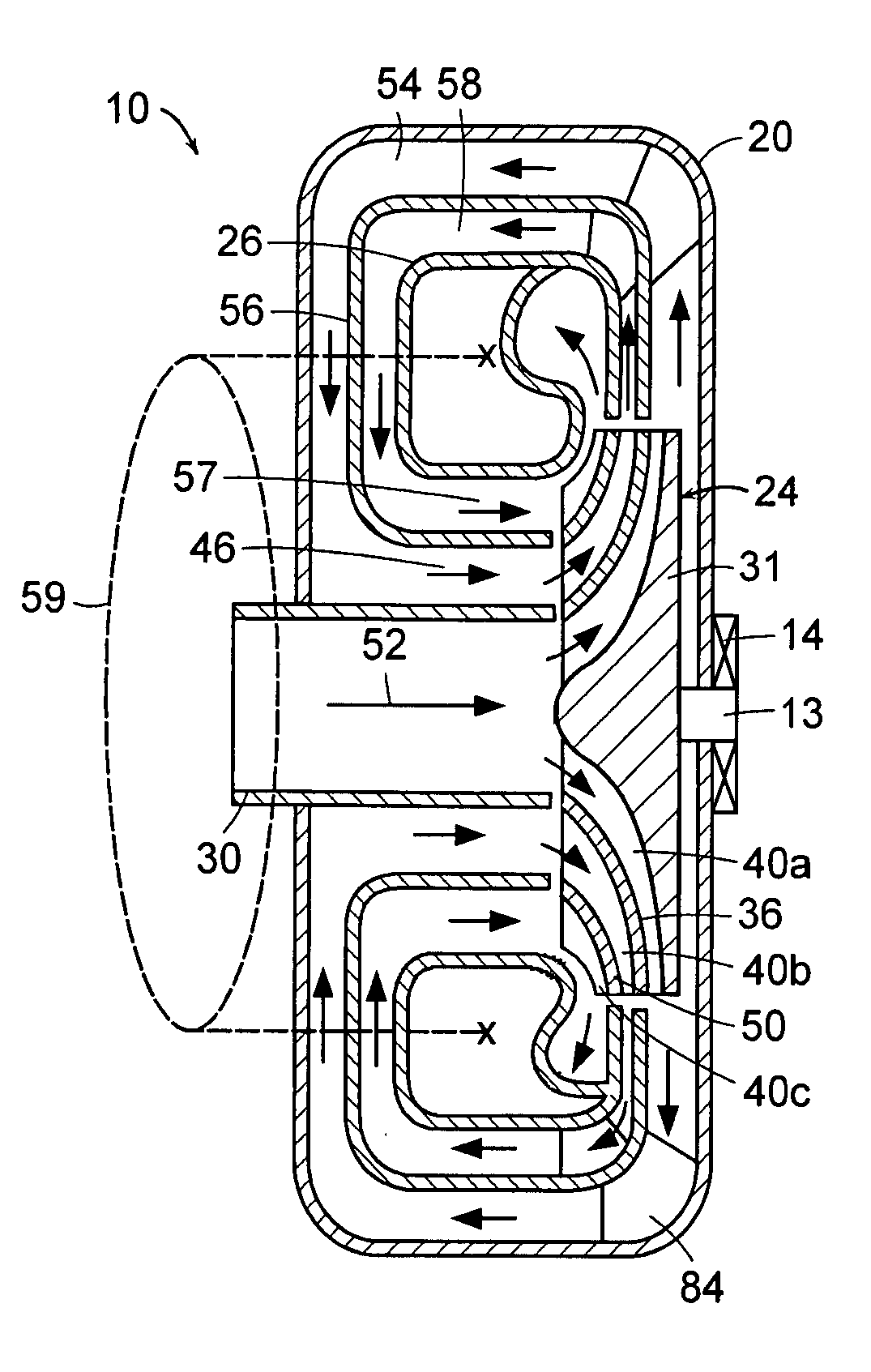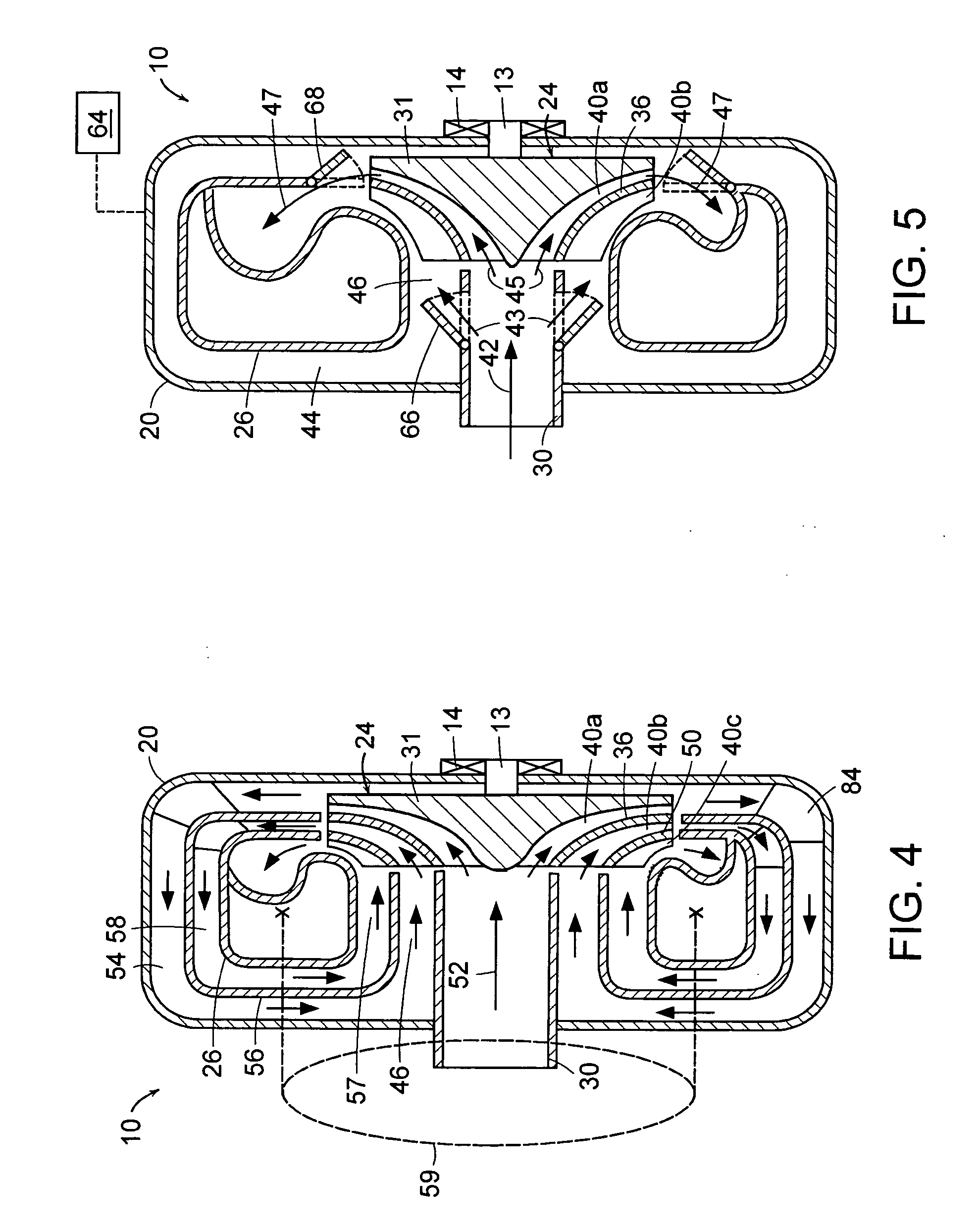Fluid transfer controllers having a rotor assembly with multiple sets of rotor blades arranged in proximity and about the same hub component and further having barrier components configured to form passages for routing fluid through the multiple sets of rotor blades
a technology of fluid transfer controller and rotor blade, which is applied in the direction of liquid fuel engines, machines/engines, priming pumps, etc., can solve the problems of limited extent to which the orientation, size and speed of the rotor blade may be effectively manipulated to enhance the acceleration of fluid flow, and the difficulty of transporting fluid between controllers without significantly diminishing its velocity or pressur
- Summary
- Abstract
- Description
- Claims
- Application Information
AI Technical Summary
Benefits of technology
Problems solved by technology
Method used
Image
Examples
Embodiment Construction
[0035] Turning to the drawings, exemplary configurations of fluid transfer controllers having rotor assemblies with multiple sets of rotor blades coupled to a common hub component are provided in FIGS. 1-14. In particular, fluid transfer controllers having rotor assemblies with multiple levels of rotor blades separated by partitions and successively stacked upon a common hub component are illustrated in FIGS. 1, 2, 4, 5, 7a, 7b, 8, 10, 11, 13, and 14. In addition, fluid transfer controllers having rotor assemblies with rotor blades coupled to opposing sides of a common hub component are illustrated in FIGS. 6a-8, and 12-14. FIG. 9 depicts a system having a plurality of fluid transfer controllers arranged in series at least one of which includes a configuration described in reference to FIGS. 1-8 and, as such, depicts at least one fluid transfer controller with multiple sets of rotor blades coupled to a common hub component. FIG. 3 depicts a perspective view of the rotor assembly dep...
PUM
 Login to View More
Login to View More Abstract
Description
Claims
Application Information
 Login to View More
Login to View More - R&D
- Intellectual Property
- Life Sciences
- Materials
- Tech Scout
- Unparalleled Data Quality
- Higher Quality Content
- 60% Fewer Hallucinations
Browse by: Latest US Patents, China's latest patents, Technical Efficacy Thesaurus, Application Domain, Technology Topic, Popular Technical Reports.
© 2025 PatSnap. All rights reserved.Legal|Privacy policy|Modern Slavery Act Transparency Statement|Sitemap|About US| Contact US: help@patsnap.com



